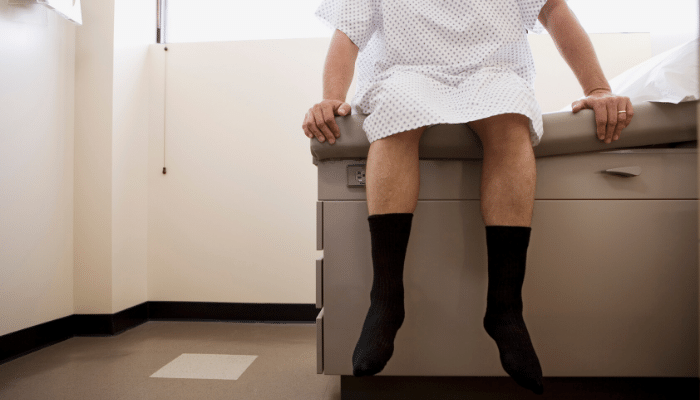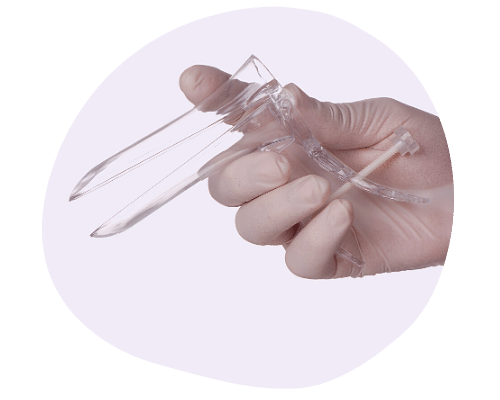Sexual Health Care

Taking care of your sexual health means knowing your body, understanding how it works, and being able to recognize when something isn’t quite right. It also means preventive care—like regular STI testing, cancer screenings, and self exams—that can help you find problems early and prevent serious illness.
Beyond recommended screenings, you might also seek out a healthcare provider for other sexual health issues, like pain during sex, sexual difficulties like low libido or erectile dysfunction, or difficulty conceiving. knowing your body and be honest and open about your sexual health and concerns.
Self Exams
Testicular exam: Testicular cancer is rare, but it’s the most common form of cancer in men between the ages of 15 and 35. The first sign is often a small lump or area of hardness on the testicle.
The easiest and fastest way to recognize a problem is to perform monthly testicular exams. When you know what your body looks and feels like when it’s healthy, you’ll know it’s time to get checked if you detect any change at all. Any lump, enlargement, hardness, pain, or tenderness in the testicles should be evaluated by your healthcare provider as soon as possible. Other symptoms usually appear after cancer has begun to spread, so it is important to get checked early.
The Testicular Cancer Society offers this guide to performing your own self exam.
Breast exams: While breast self exams aren’t effective as detecting breast cancer and regular exams aren’t recommended as breast cancer screening, they can help you become familiar with your breasts. You can both learn what feels normal and also recognize changes when they happen and report these to a healthcare provider. Breast changes are common and most are not cancer.
Learn more about breast self exams, as well as breast changes and conditions.
Provider Exams: What to Expect
Pelvic Exam
 If this is your first exam, let your provider know. He or she will be more apt to explain the procedure as you go along. Your provider will examine your external sexual organs for any changes or abnormalities, and will use an instrument called a speculum (pictured here) to open your vagina and take a look at your cervix.
If this is your first exam, let your provider know. He or she will be more apt to explain the procedure as you go along. Your provider will examine your external sexual organs for any changes or abnormalities, and will use an instrument called a speculum (pictured here) to open your vagina and take a look at your cervix.
Depending on your age and screening history, a Pap test and/or an HPV test may be done as part of a pelvic exam. While the vagina is open, the health care provider will use a small stick or brush to take a collection of cells from your cervix. The Pap test and HPV test are important tools to prevent cervical cancer.
Your provider may perform a bimanual and/or rectovaginal exam. During the bimanual exam, the doctor will put one or two gloved and lubricated fingers into the vagina while feeling the abdomen so that they can feel the placement of internal reproductive organs and check for signs of cysts, tumors, or pain. During a rectovaginal exam, the provider would place a gloved and lubricated finger into the rectum to check for issues behind the uterus. Sometimes, they place a finger in the rectum and another in the vagina to check the pelvic floor muscles for issues.
The whole exam is quick, painless and necessary. Once a baseline has been established, any changes in your body will be noticeable and easier to diagnose. If an abnormality exists, it can be treated.
Testicular Exam
Many health care providers perform a testicular exam as part of a patient’s annual checkup. It’s quick and painless. Your doctor will feel your testicles to look for lumps and bumps, swelling, hardening or enlargement. You may be embarrassed or even have an erection, but both responses are so common that health care providers are unfazed by either reaction. If it is your first exam, you may want to mention that; many doctors will explain things to you step-by-step, show you how to perform a self-exam and answer all your questions.
Sexually Transmitted Infections
There are many ways to reduce your risk for STIs and protect your health and fertility, including regular STI testing. Testing is so important is because many STIs have no obvious signs or symptoms, so a person wouldn’t know if they had one. Some STIs can also cause serious health problems if not diagnosed and treated early. There are specific recommendations for testing, but you can also talk to a health care provider about your sexual history and see what they recommend.
There are some signs and symptoms that may be caused by an STI that you should be aware of, so you’ll know when to check in with a health care provider. If you notice any of the following, it may be a sign of an STI or other infection:
- pain in the pelvic area
- pain in the lower abdomen
- pain when having sex
- unusual discharge from the vagina or penis
- a bad smell
- bleeding between periods
- burning when you pee
- sores, ulcers, blisters or warts
- a heavy feeling in the testicles
- swelling, redness or a rash
- excessive itching in the genital area
Having a symptom doesn’t mean you have a disease. The symptoms (or lack of) are so many and varied, it’s hard to tell if, for example, bleeding between periods is simply the result of a normal, age-related hormone imbalance or an STI. But the bottom line is—know your body, and when something isn’t right, get checked by a health care provider. Make sexual health care part of your healthcare routine.